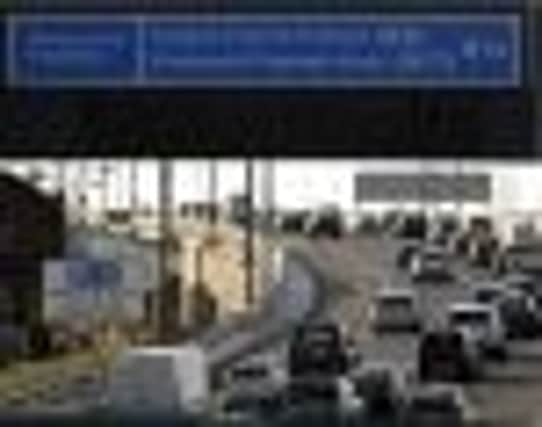How ‘shocking’ lack of white lines puts lives at risk


Emergency repairs are required to repaint white lines on 87 per cent of the road network north of the Border, according to an industry survey, which is being published today.
The lane markings are barely visible on nearly two-thirds of Scotland’s roads and almost a further quarter are in the warning zone, the research found.
Advertisement
Hide AdAdvertisement
Hide AdMajor roads in the red zone, or in worst condition, include stretches of the M9, between Edinburgh and Stirling, and the M90 between Fife and Perth.
Parts of the A720 Edinburgh city bypass are also included in the red category, along with sections of the A90, A91, A84 and A85 – main routes north of the Central Belt.
The A7 Carlisle-Edinburgh road was the only one of 22 routes in Scotland to be checked which was found to meet standards or be in an optimum condition.
Reflective lane markings showing the centre and edge of roads can be a key safety tool for drivers, especially in poor visibility or at night. The lines often include glass beads to make them reflective.
The Road Safety Markings Association, which checked 130 miles of various types of roads north of the Border, said markings were vanishing at an “alarming” rate, and described the results as “shocking”.
It said markings on 62.8 per cent of roads were “barely there” and required immediate repairs.
The association said a further 24.5 per cent of roads surveyed were in the amber category, or warning zone, and also required urgent repairs.
Just 9.5 per cent of Scottish roads met standards, and only 3.2 per cent were classed as “optimum”.
Advertisement
Hide AdAdvertisement
Hide AdThe Automobile Association, the UK’s biggest motoring group, said improving markings was a simple life saver.
President Edmund King said: “Lives can be saved by one of the cheapest measures in the road engineer’s toolbox – simple white lines.
“In particular, highly visible markings at the edge and centre of the road – that can be seen on a wet night – are enormously cost-effective in saving lives.”
Mr King added: “The spell of bad weather over the winter has taken its toll on the roads – not just on the quality of the surface but on the visibility of road markings.
“Drivers must be able to ‘read’ the road at every turn. Without this most modest of investments, motorists will be driving blind.”
George Lee, national director of the Road Safety Markings Association, said he had been stunned by the survey results.
He said: “These findings are shocking. Just a simple cross-section of roads – arguably representative of the entire network – shows a level of deterioration that defies belief.
“We recognise the UK is under huge financial pressure, but road markings are widely recognised to provide the best, most simple navigation aid to drivers, and to be the most cost-effective road safety measure. It is time we gave drivers the vital clues they need to use our roads.”
Advertisement
Hide AdAdvertisement
Hide AdMr Lee said the situation was little better in England, with markings barely visible on 43 per cent of roads, and repairs also required on a further 23 per cent in the warning zone.
However, one quarter of roads met standards, and nearly 9 per cent were in optimum condition.
Mr Lee said there was an obvious parallel between roads with poor markings and those with the ten highest casualty rates – all of which are south of the Border, and most in nothern England.
He said: “We could see a clear, direct correlation between deadly roads and deadly road markings when we examined the ten most dangerous roads identified by the Road Safety Foundation.”
The Convention of Scottish Local Authorities, which represents councils, insisted it was tackling the problem.
A Scottish Government spokesman said: “In the face of Westminster-imposed cuts to the Scottish budget, increasing traffic levels and the impact of severe weather, all those with responsibilities for maintaining roads face a considerable challenge to retain road standards.
“Our Trunk Road Operating Company contracts use the national standards for the identification, planning and repair of defects including sub-standard road markings and our substantial investment programme enables us to tackle our maintenance programmes with road safety as a key priority.”